Indoor vs Outdoor Fiber Optic Cables: Which One Do You Need?
Imagine a world where your internet connection slows down just when you need it the most, or your office network struggles to handle high-demand tasks. Often, the hidden culprit behind such issues is not your service provider, but the type of fiber optic cable running through your walls or across your property. Choosing the wrong cable can lead to disruptions, extra costs, and reduced network performance.
In this blog, we’ll break down everything you need to know about indoor vs outdoor fiber optic cables, like their differences, features, practical uses, and tips to choose the right one for your setup. By the end, you will have a clear understanding of which cable will provide fast, reliable, and long-lasting connectivity for your network needs.
What Are Fiber Optic Cables?
Fiber optic cables are specialized cables that use light to transmit data at incredibly high speeds. Unlike traditional copper cables, fiber optics is immune to electromagnetic interference, offers higher bandwidth, and allows for more reliable, long-distance connections. These cables are widely used in internet services, corporate networks, data centers, and modern smart systems.
Investing in the right fiber optic cable ensures your network can handle increasing data demands without compromising speed or reliability.
Understanding Indoor Fiber Optic Cables
Indoor fiber optic cables are designed for use inside buildings, including offices, residential complexes, or commercial spaces. They are optimized for flexibility, safety, and short-distance performance.
Key Features:
- Flexible and Lightweight: Easy to route through walls, ceilings, and floors.
- Fire-Rated: Typically come with LSZH (Low Smoke Zero Halogen) jackets to minimize toxic smoke during a fire.
- Short Distance Optimized: Ideal for connections within a building or campus.
- Protection Against Minor Stress: Suitable for indoor handling but not designed for harsh external conditions.
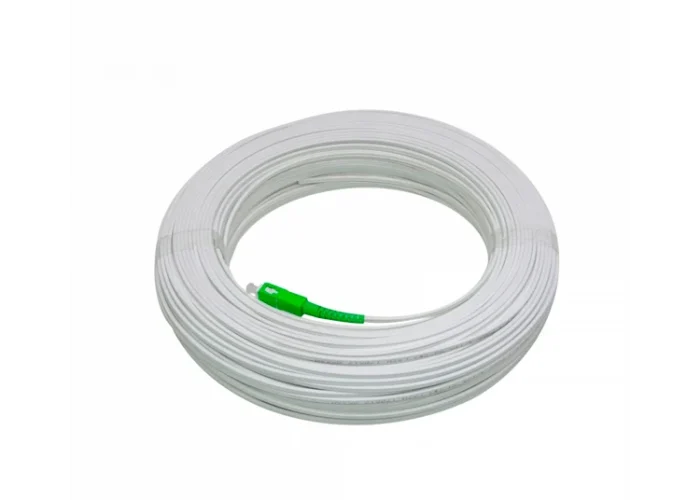
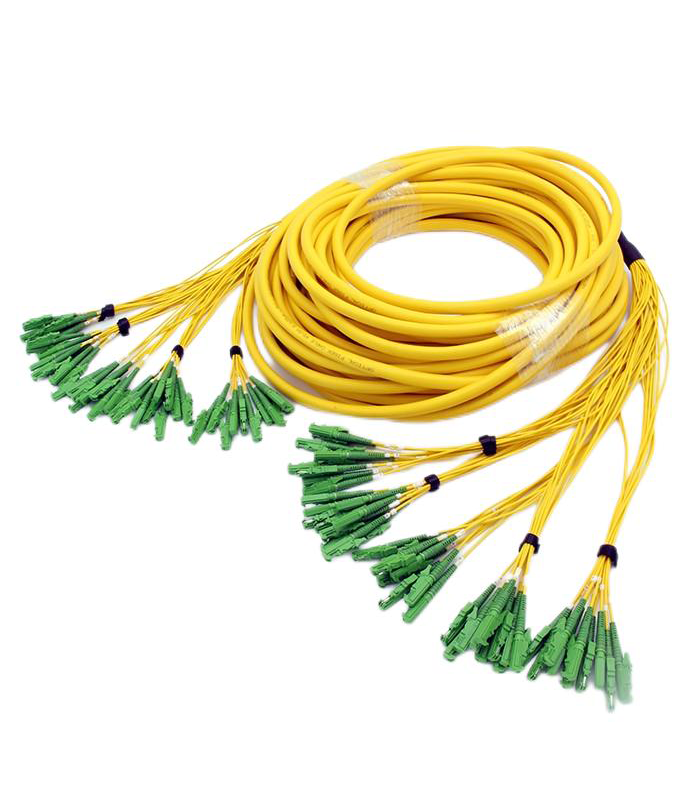
Common Uses:
- Office networks and server rooms.
- Residential building, internet, and TV connections.
- Data centers within commercial buildings.
Indoor cables perform best in controlled environments where they are shielded from harsh weather, direct sunlight, or physical damage.
Understanding Outdoor Fiber Optic Cables
Outdoor fiber optic cables are designed to withstand harsh environmental conditions and extreme weather. They are tougher, more durable, and often armored to protect against moisture, UV rays, rodents, and physical impacts.
Key Features:
- Weather Resistant: Built to endure sun, rain, wind, and temperature fluctuations.
- Armored Options Available: Provides extra protection from physical damage.
- Long Distance Transmission: Suitable for inter-building or city-wide connections.
- Waterproof and UV-Resistant: Ensures long-lasting performance with minimal maintenance.
Common Uses:
- Connecting multiple buildings across campuses or industrial areas.
- Telecommunication networks spanning streets or neighborhoods.
- Outdoor installations on poles, rooftops, or underground ducts.
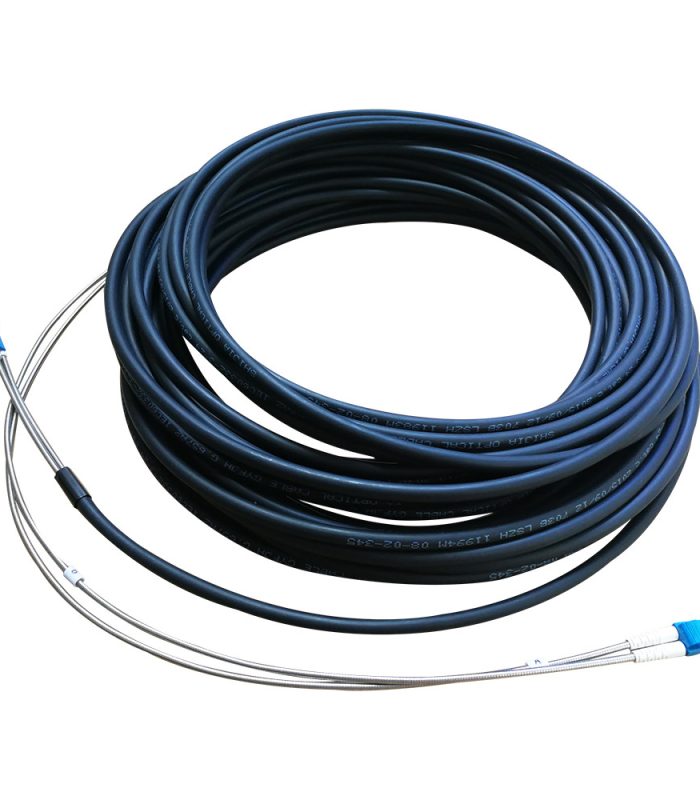
Outdoor cables are essential when you need robust, high-performance connectivity in environments exposed to external stressors.
Key Differences Between Indoor and Outdoor Fiber Optic Cables
Understanding the differences between indoor and outdoor cables is critical to selecting the right one:
Feature | Indoor Fiber Optic Cable | Outdoor Fiber Optic Cable |
Environment | Controlled indoor spaces | Harsh outdoor conditions |
Jacket Material | LSZH or PVC | UV-resistant, waterproof, armored |
Flexibility | High | Moderate to low due to protective layers |
Distance Capability | Short-range | Long-range |
Installation | Easy and lightweight | Requires specialized installation |
Cost | Lower | Slightly higher due to durability |
Hybrid Indoor/Outdoor Fiber Optic Cables
Some projects require connectivity that spans both indoor and outdoor environments. Hybrid fiber optic cables combine the flexibility of indoor cables with the durability of outdoor cables.
Benefits of Hybrid Cables:
- Can be routed directly from outdoor installations into buildings without additional transitions.
- Reduces installation costs and potential failure points.
- Offers flexibility and durability in one cable solution.
Hybrid cables are an excellent choice for mixed environments such as campuses, corporate facilities, and smart building setups.
How to Choose the Right Fiber Optic Cable
Selecting the right cable ensures network reliability and minimizes maintenance costs. Consider the following factors:
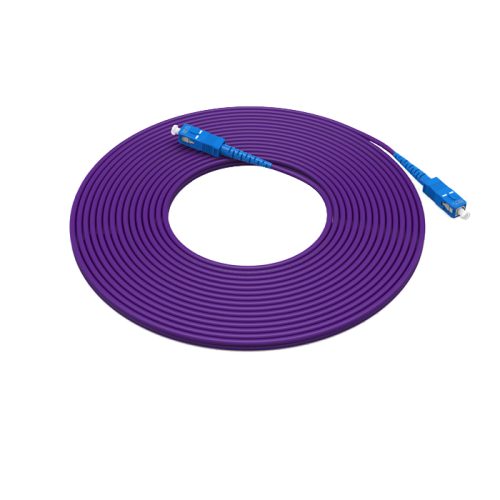
- Installation Environment: Will the cable run indoors, outdoors, or both?
- Distance Needs: Longer distances require outdoor-grade or long-range indoor cables.
- Durability Requirements: Consider exposure to weather, UV rays, or rodents.
- Safety Regulations: Indoor cables may need fire-rated LSZH jackets.
- Budget Considerations: Outdoor cables cost more but provide longer-term durability and reduced maintenance.
Choosing the correct cable from the start can save significant time and money in the long run.
Installation Tips for Optimal Performance
For offices, commercial buildings, and data centers:
- Cat 6 can handle small to medium office networks efficiently.
- Cat 7 is ideal for large office floors, server rooms, or businesses relying on high-speed, uninterrupted connections.
Recommendation: Businesses that require high-end, interference-free networks with multiple devices and longer cable runs should choose Cat 7 for reliability and future-proofing.
Installation Tips for Optimal Performance
Proper installation ensures your fiber optic cables perform reliably for years:
- Indoor Installation: Use cable trays, conduits, or raceways to protect cables from bending or accidental damage.
- Outdoor Installation: Bury cables at a safe depth, use armored protection if needed, and ensure UV-resistant jackets are in place.
- Avoid Sharp Bends: Fiber optic cables are sensitive to bending, which can reduce signal quality.
- Hire Professionals: Certified technicians can ensure installation follows best practices and safety standards.
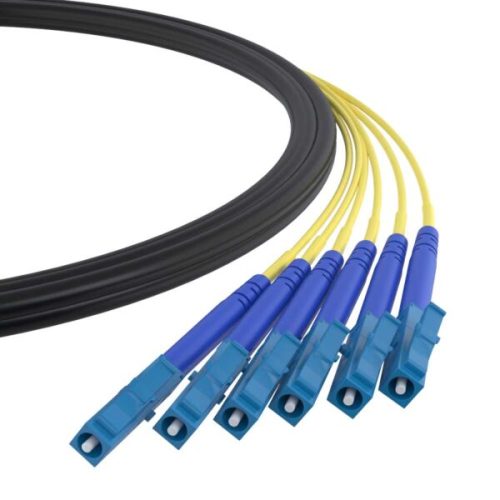
Advantages of Choosing the Right Cable
Using the appropriate fiber optic cable offers numerous benefits:
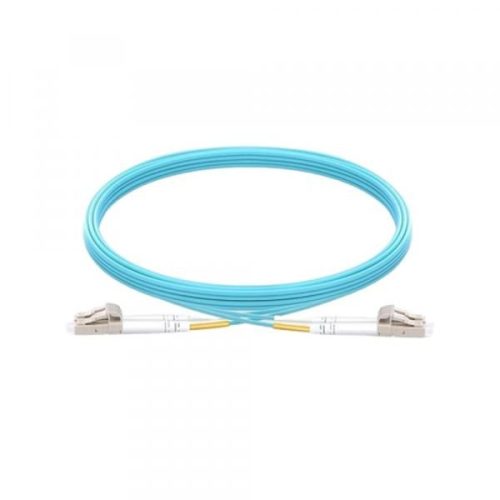
- High Network Performance: Ensures fast, reliable data transmission.
- Reduced Maintenance Costs: Durable cables require fewer repairs or replacements.
- Enhanced Safety: Fire-rated indoor cables protect occupants in case of emergencies.
- Future-Proofing: High-quality cables support upcoming technologies and higher bandwidth demands.
Selecting the right cable is an investment that pays off in consistent connectivity, efficiency, and peace of mind.
Conclusion
To sum up, choosing between indoor and outdoor fiber optic cables may seem straightforward, but the decision impacts network performance, reliability and long-term costs. Indoor cables are ideal for controlled environments, while outdoor cables offer durability and protection against extreme conditions. Hybrid cables provide flexibility for projects that span both environments.
At Cable Zone Technology, we offer high-quality indoor, outdoor and hybrid fiber optic cables to suit all your networking needs. With our expertise and reliable products, you can ensure smooth, high-speed connectivity for any project, now and in the future.
Quick Links
What we offer
- Commercially competitive prices
- Reliable & consistent quality
- Reliable & timely delivery
- A targeted stocking policy
- Technical support for Projects
Contact
- Shop No. S61 Ahmed Mohammed Baghlaf, Naif, Deira, Dubai, UAE
- +971 55 418 5686
- +971 4 558 4670
- cablezonetech@gmail.com
- sales@cablezonetechnology.com
Copyright © 2025 Cable Zone | All Rights Reserved. Powered by DEDOTE
